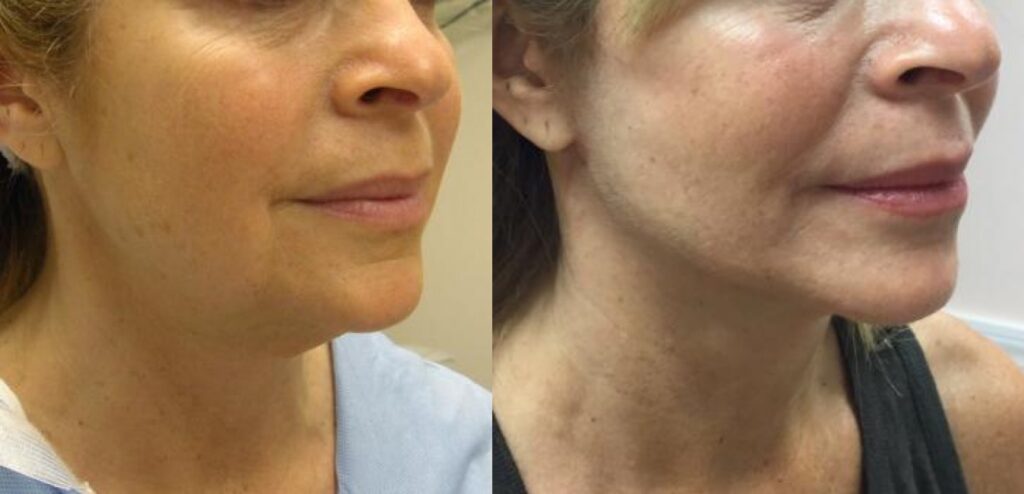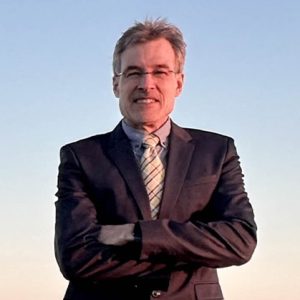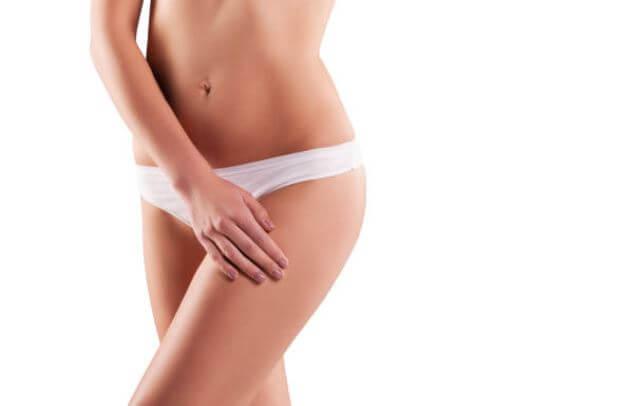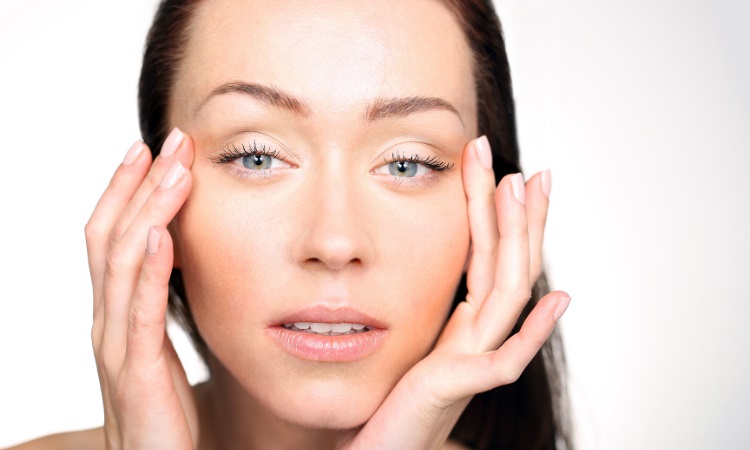Precision Tx Laser: the Best Non-surgical Facelift!
October 9, 2015
Precision Tx Laser: the Best Non-surgical Facelift!
Dr. Langdon is an expert in minimal incision surgical facelift. He has performed facelifts for more than 15 years and has written several chapters on facelift technique in surgical textbooks (most recently in “Surgery of the Skin” published in 2015 by Elsevier, the world’s largest medical publisher). A surgical facelift provides the greatest possible improvement for sagging of the lower face and neck. Modern facelifts, such as Dr. Langdon’s Express-Lift, reverse sagging by pulling the fascia layer of the lower face and neck in a more vertical direction than was done in older facelift techniques. (Fascia is a connective tissue layer beneath the skin.) The more backward direction of tightening in older facelifts frequently resulted in an artificial-appearing “swept back” or “wind tunnel” look.

*Individual Results May Vary
New Non-surgical Devices for Facelifts
Over the past few years, however, several different non-surgical medical devices have been developed to provide tightening of the skin in the neck and lower face. These devices are all non-invasive or minimally invasive, and all work by heating collagen, a connective tissue protein that is the primary component of both skin and fascia. Collagen fibers have the remarkable property of contracting (shrinking) if they are heated to the right temperature. Heating of collagen must be done carefully. Too little heating will result in inadequate contraction and too much heating can cause a thermal injury (burn). The more sophisticated of the non-surgical skin-tightening devices include heat sensors that provide real-time data on the temperature of the treated tissue.
Precision Tx Laser Targets Precise Location of Treatment
Dr. Langdon has extensive experience in using several of these nonsurgical skin-tightening devices and has been most impressed with Precision Tx, an infrared laser. Precision Tx delivers laser energy at a wavelength of 1440 nanometers (nm). This laser wavelength is the most effective yet devised for liquifying fat tissue. The laser energy is channeled down a thin fiber optic that is used to traverse the treated area of the neck and lower cheeks. The 1440-nm laser energy has unique physical properties that allow the laser beam to be precisely directed from the tip of the fiber optic. (Laser energy of all other wavelengths diffuses in all directions from the tip of an optical fiber.) Laser energy from Precision Tx is first directed “downward” toward the fascia layers of the neck and lower face. Because the fascia layer is largely collagen, appropriate heating can produce contraction of this layer. The fiber optic is then directed “upward” toward the under surface of the skin. Because the skin is composed mostly of collagen, it too will contract if heated adequately.
Precision Tx Laser Ensures Precise Temperature Control
The Precision Tx laser device senses the local temperature near the tip of the fiber optic and provides real-time temperature data of the treated tissue. The device automatically shuts itself off if a safety threshold is approached, ensuring that the treated areas are not overheated. The fiber optic is quite thin and requires very small skin incisions as entry points. No stitches are needed, and the incisions generally heal within a few days and are undetectable within one to two weeks.
What is Precision Tx Treatment Like?
In the majority of cases, Dr. Langdon performs liposuction of the neck and jowls (lower cheeks) along with Precision Tx laser treatment. First, he gently adds local anesthesia to the neck and lower cheek areas. The anesthetic solution is placed within the fat layer from where it spreads to provide numbing of the overlying skin and the underlying fascia layers. The process of adding the anesthesia is nearly painless and the actual Precision Tx and liposuction treatments are completely painless.
Next, through tiny skin incisions (too small to require any stitches), Dr. Langdon uses the Precision Tx fiber optic to evenly distribute the laser energy throughout the treated area. First, he directs the fiber tip downward (toward the fascia) until a precise dose of laser energy has been delivered; then, he directs the laser upward to treat the underside of the skin. Liposuction is then performed by inserting a tiny cannula (a tube-like instrument) through the same small skin incisions. The laser-treated fat has been partly liquified and is readily removed by liposuction.
Dr. Langdon uses very small (2-millimeter wide) cannulas for liposuction. A suction machine provides the vacuum when he treats the neck. Dr. Langdon prefers to use a syringe when suctioning the jowls because he can precisely measure the volume of fat that has been removed. A layer of foam rubber is then applied to the treated areas followed by a “chin strap” style compression band.
What is Recovery after Precision Tx Treatment Like?
After the local anesthetic wears off, there is mild soreness (generally treated with only Tylenol). The next day, the patient returns to the office. The wrap and foam rubber layer are removed, revealing remarkable improvement in the contour of the neck. Most patients have only minor bruising and some swelling in the jowl area. The patient will wear the “chin strap” for two more days. Almost all patients are fully recovered within one week or even sooner.
Who is a Good Candidate for Precision Tx Laser Facelift?
Patients with significant excess fat in the neck, and with modest sagging in the neck and jowls, will show the greatest improvement in neck contour after Precision Tx treatment. Those patients with greater sagging of the neck and jowls are more likely to require a surgical face lift such as Dr. Langdon’s Express-Lift.
Fiber in Diet Helps Reduce Risk of Cardiovascular Disease
A recent study (December 2013) published in the British Medical Journal (BMJ) demonstrates the value of dietary fiber in reducing the risk of cardiovascular disease (CVD), including heart attack and stroke. The authors of the BMJ study reviewed major medical studies published from 1990 to 2013 concerning fiber and cardiovascular risk in generally healthy populations in Europe, the U.S., Japan, and Australia. Their comprehensive review and analysis of 22 high-quality studies focused on the relationship between CVD and dietary intake of different types of fiber: 1) total fiber, 2) insoluble and soluble fiber, and 3) fiber from cereal, fruit, and vegetables.
Cardiovascular disease has been declining in much of the developed world, yet it is responsible for about half of all deaths in Europe and a third in the U.S. Since the 1970s, dietary fiber has been known to play a protective role in heart disease and many studies have looked at the relationship between fiber and cardiovascular risk factors, including hypertension (high blood pressure), obesity, insulin sensitivity (associated with diabetes), and elevated plasma cholesterol. The aim of this study was to determine if increased dietary fiber intake was associated with reduced rates of cardiovascular disease.
Dietary Fiber is Derived from Plant Food and is Categorized as Soluble or Insoluble Fiber
Fiber includes parts of plant food that cannot be digested and is generally categorized as soluble (dissolves in water) and insoluble (does not dissolve in water). Soluble fiber is found in oats, beans, apples, carrots, and barley. Soluble fiber forms a gel in the small intestine that can decrease the rise in blood sugar (glucose) and fats (lipids) that follow a meal, potentially lowering cholesterol levels and increasing feelings of satiety (fullness) and thus helping prevent weight gain. Insoluble fiber is found in whole-wheat flour, wheat bran, nuts, beans, and vegetables such as cauliflower, green beans, and potatoes.
Soluble and Insoluble Fiber Play a Role in Reducing the Risk of Cardiovascular Disease
The authors of this comprehensive BMJ study concluded that the risk of cardiovascular disease was 9 percent lower for every 7 daily grams of total fiber consumed. The findings from this study are consistent with previous recommendations for fiber intake; however, Americans have found it challenging to achieve the minimum recommended levels of fiber: the average adult consumes only 15 grams daily. The minimum recommended levels for men age 50 and younger are 38 grams of fiber per day and for men 51 and older 30 grams per day. The minimum recommended levels for women age 50 and younger are 25 grams of fiber per day and for women age 51 and older 21 grams per day.
Precision Tx Laser Consultations Available
If you have further questions about Precision Tx Laser, we encourage you to schedule a consultation at The Langdon Center in Guilford, CT. Call us at 203-453-8625 or fill out our convenient online contact form.
Every 7 Grams of Dietary Fiber Reduces Risk of CVD by 9 Percent
The BMJ study was able to draw conclusions about fiber from whole foods but did not assess fiber consumed in supplements. However, fiber in food provides additional nutrients not found in supplements. According to the study, it should not be difficult to increase dietary fiber intake. An additional 7 grams of fiber in one’s diet can be achieved by eating one portion of whole grains and a portion of beans daily, or by eating two to four servings of fruit and vegetables daily. Even better, doubling this additional fiber intake to 14 grams a day would be expected to reduce cardiovascular disease risk by 18 percent!
Using A Fitness App Helps to Monitor Daily Fiber Intake
Not sure how many grams of fiber you are consuming each day? Try using one of the fitness apps for your Apple iPhone or Android phone, such as Lose It! or MyFitnessPal. These apps not only track your daily intake of food (total calories) but also break down key components of food consumption such as protein, fat, carbohydrates—and fiber.
Picosecond Laser Facial Revitalization: Improving Sun-Damaged, Aged or Scarred Skin
Most aesthetic laser systems deliver short pulses of energy in the form of photons, either visible or infrared (invisible) light. High intensity pulses of laser light of specific wavelengths (color) can safely improve sun-damaged, aged or scarred skin without causing side effects. The higher the laser energy and the shorter the duration of the laser pulse, the greater the precision of the revitalizing effect. It is important that the laser pulse be delivered in an ultra-short burst of energy to ensure a safe treatment.
Dr. Langdon was one of the first physicians in the United States to introduce the revolutionary PicoSure laser, the world’s first picosecond aesthetic laser. The high-energy laser pulses from the PicoSure are compressed into the ultrashort picosecond range (a picosecond is 1 trillionth of a second!)—20 times faster than the previous record-setting nanosecond lasers.
What Are PicoSure Laser Treatments Like?
When delivered to the skin with a special FOCUS lens array, the laser energy is fractionated into tiny spots of intense power that are too brief to impart a significant heat effect. The tiny spots of the skin that receive the laser energy are separated from each other so that the intervening areas of skin are not treated.
The limited overall heating of the skin results in a comfortable treatment that requires no anesthetic (numbing) beforehand. After a facial treatment, there is only mild redness that fades completely within a few hours. The best news of all is that patients can see remarkable improvement after only a few treatments. Dark, pigmented sunspots and even melasma (dark areas of facial skin that result from excess estrogen hormone) quickly fade. Wrinkles and even acne scars show significant smoothing.
How Does the PicoSure Laser Work?
The wavelength of PicoSure laser energy (755 nanometers) is optimal for reducing excessive skin pigment. This wavelength of light is highly absorbed by melanin (the skin’s pigment), resulting in destruction of excess pigment. Another important effect of picosecond laser energy pulses is stimulation of deeper skin cells to produce new collagen. Collagen is the skin’s primary structural protein; increased collagen will improve skin texture by smoothing wrinkles as well as indented scars.
The improvement in acne scars from PicoSure treatments with the special FOCUS lens array (fractional treatment) is so impressive that the FDA approved the laser for treating acne scars in July 2014. In FDA approval studies, 86% of patients were satisfied with the improvement in their acne scars from PicoSure laser treatments.
Contact The Langdon Center Today
Dr. Langdon and all of his nurses and staff are very friendly and they know how to make you feel very comfortable. He is a very experienced doctor, I call him an artistic dr. because he’s so precise in his work. If you would like something done right, dr. Langdon is the one to see. I am very pleased with my results and very grateful for him and his staff being here in Ct.
Take the Next Step
If you have further questions about Precision Tx Laser, we encourage you to schedule a consultation at The Langdon Center in Guilford, CT. Call us at (203) 453-8625 or fill out our convenient online contact form.







